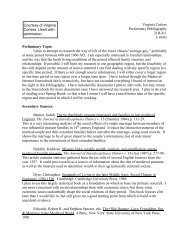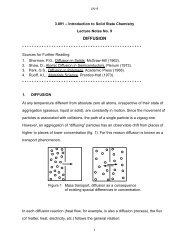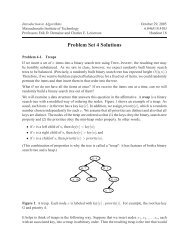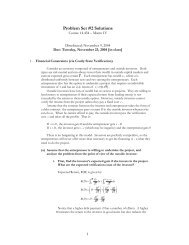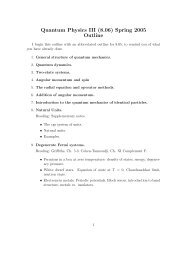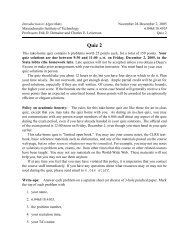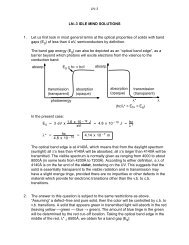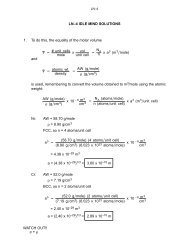3.091 â Introduction to Solid State Chemistry Lecture Notes No. 2 ...
3.091 â Introduction to Solid State Chemistry Lecture Notes No. 2 ...
3.091 â Introduction to Solid State Chemistry Lecture Notes No. 2 ...
- No tags were found...
You also want an ePaper? Increase the reach of your titles
YUMPU automatically turns print PDFs into web optimized ePapers that Google loves.
LN–2reaction partners. Because of a limited data base on electron affinity, L. Paulingintroduced a related term, the relative electronegativity (see below). From the aboveconsiderations it should be clear that no sharp dividing line exists between ionic andcovalent bonding. We might consider a completely ionic bond <strong>to</strong> result in cases wherethe electron drift is such that one a<strong>to</strong>m (the cation) becomes entirely deficient in one ormore electrons, and the other a<strong>to</strong>m (the anion) becomes correspondingly electron-rich,the bonding electrons being entirely under the influence of the latter. Hydrogen halidesare σ bonded and have dipole moments; the bonds are referred <strong>to</strong> as polar covalency.The homonuclear dia<strong>to</strong>mic molecules formed by the halogens, viz. F 2 , Cl 2 , Br 2 and I 2 ,are all σ-bonded systems involving spin-pairing of the various p z electrons (2p z , 3p z ,4p z and 5p z respectively). They have no permanent dipole moments.Energetics of Covalent BondingPauling extensively treated the energetics of polar covalencies, encountered in allheteronuclear systems (such as H–Cl) which have permanent dipole moments(H δ+ – Cl δ– ). His approach visualizes the bonding <strong>to</strong> consist of two components - a purecovalency and an ionic bonding component with attraction resulting from the interactionof the fractional charges on the nuclei involved.Pauling determines the basic covalent bonding component, for example in theformation of HCl, from the experimentally obtained bond energies associated with themolecular species of the components, H 2 and Cl 2 . For this purpose he made the basicassumption that the covalent bond component between the dissimilar a<strong>to</strong>ms is given bythe geometric mean of the pure covalent bond energies associated with these19



![18.03 Class 21, April 3 Fun with Fourier series [1] If f(t) is any decent ...](https://img.yumpu.com/51148985/1/190x245/1803-class-21-april-3-fun-with-fourier-series-1-if-ft-is-any-decent-.jpg?quality=85)

